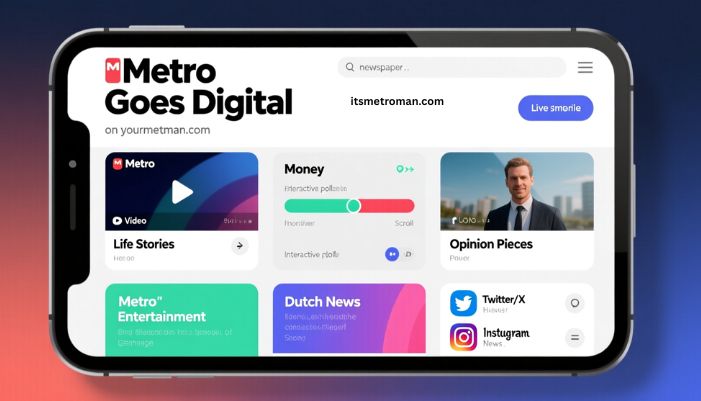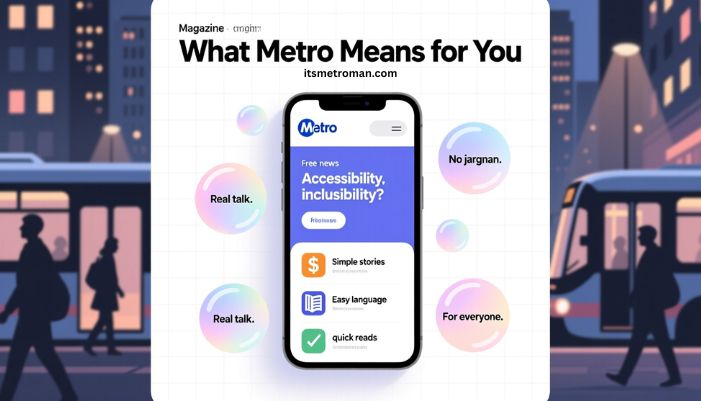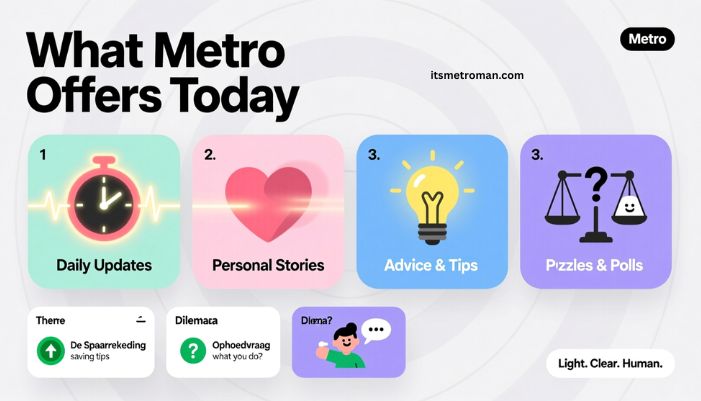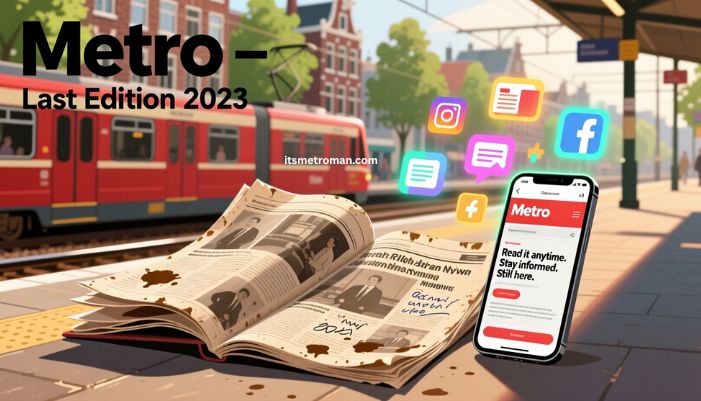Metro was a free paper. You could pick it up at any train station in the Netherlands. It had short stories, simple news, and useful tips. People read it while they traveled. It started in 1999. It stopped printing in 2023. Now it lives online.
You can still read Metro on its website: itsmetroman.com.
This is the story of Metro. You’ll learn how it began, how it changed, and where it is today.
Metro Starts in 1999
Metro was first printed on 21 June 1999. It was free. People found it in green boxes at train stations. They picked it up before getting on the train. That was the goal. Metro wanted to give people easy news for the road.
It was short. It was easy to read. And it was new. People liked that.
The paper did not call itself “de Metro.” The team joked: “Metro lies on the station, the metro rides on rails.” Metro meant both the train and the paper. But this Metro was about news, not trains.
Soon, it was everywhere. Not just in stations, but in schools, shops, and libraries.
In 2006, Metro was the biggest newspaper in the world. It was printed in many countries and languages.
Other Free Papers Joined
Metro was not alone for long. Other free papers showed up. These included:
- Sp!ts
- DAG
- De Pers
But most of them did not last. DAG ended after one year. De Pers had money problems. In the end, Metro stayed.
In 2012, Telegraaf Media Groep (TMG) bought Metro. They owned Sp!ts too. Sp!ts stopped printing in 2014. Metro stayed in print.
Metro changed over time. In 2019, the paper got a new look. Some stories were short. Others were long. You could read fast or take your time.
People liked having that choice.
Then Came the Problems
Metro made money from ads. The more people read the paper, the more ads it could sell. But when fewer people used trains, fewer people picked up the paper.
This got worse during COVID-19. Train use dropped. Metro stopped printing in March 2020. At first, it was meant to be a break.
Later, it became clear: the paper would not come back.
In October 2023, Metro printed its last copy. After 24 years, the paper ended. It was a big moment. Many people were sad. The paper had been part of their day for years.
But Metro was not gone. It moved online.
Metro Goes Digital

Metro now lives on itsmetroman.com. It still shares news every day. It writes about:
- Life stories
- Money
- Entertainment
- Dutch news
- Opinion pieces
The stories are still short and simple. Some are fun. Some are deep. Some help you with daily life.
Metro also has an app. You can read it on your phone or tablet. It’s free. Just like the paper used to be.
Metro uses videos, polls, and social media too. It works for how people read today.
What Metro Means for You

Metro is not a paper anymore. You can’t grab it at a station. But you can still read it. It’s online now. That makes it easy to use on the go.
Here’s what you get:
- Free news
- Simple stories
- Easy language
- Quick reads
Metro wants to speak to real people. Not just news experts. It talks about money, health, choices, and people’s lives. That makes it different from many big news brands.
Why the Paper Had to Stop
Metro stopped printing for a few clear reasons:
- Fewer riders: During COVID, fewer people took trains.
- Lower ad money: Fewer readers meant fewer ads.
- High costs: Printing papers is not cheap.
- New habits: People now read more on phones.
Metro said goodbye to print. But it said hello to the future.
What Metro Offers Today

Metro is still strong online. It reaches many readers every month. It shares:
- Daily updates
- Personal stories
- Advice and tips
- Puzzles and polls
Its tone is light, clear, and human. It keeps things short and helpful. You won’t find long, hard texts. You’ll find things that fit your life.
Metro also runs theme pages. Some popular ones include:
- De Spaarrekening (saving tips)
- Opvoedvraag (parenting stories)
- Dilemma (what would you do?)
These pages are popular because they feel personal. They talk about things that matter in daily life.
Key Dates in Metro’s Story
| Year | What Happened |
|---|---|
| 1999 | Metro started as a free paper |
| 2006 | Metro became the biggest paper in the world by readers |
| 2012 | TMG bought Metro |
| 2014 | Sp!ts stopped; Metro stayed |
| 2019 | Metro updated its look |
| 2020 | Metro stopped printing (COVID-19) |
| 2023 | Metro printed its last edition |
| 2024 | Metro now only lives online |
What the Future Looks Like
Metro will keep doing what it does best:
- Write for readers
- Keep news short
- Share useful ideas
- Ask real-life questions
But there are still challenges. Online ads do not pay much. Many news sites compete for attention. Metro needs to stay fresh to keep its readers.
Metro may offer new tools in the future. It may try:
- Newsletters
- Paid content
- Member stories
- More videos
For now, Metro stays free. You can read it every day. You just need a screen.
FAQs
What is Metro?
Metro is a Dutch news brand. It started as a free paper in 1999. It is now a digital-only news site.
Can I still read Metro?
Yes. Go to itsmetroman.com. It’s free.
Why did the paper stop?
Fewer people used trains. Ads dropped. Printing cost too much. Metro went online instead.
When did the last paper come out?
In October 2023.
Is Metro still free?
Yes. You can read it online for free. You can also get the app.
Does Metro still write news?
Yes. It writes news, opinion, life stories, and tips every day.
Final Thoughts
Metro started as a free paper you could grab at train stations. It gave you short news, helpful tips, and real-life stories. Over time, it became part of daily life for many people in the Netherlands.
But times changed. Fewer people used trains. Ads dropped. Printing costs rose. In 2023, Metro printed its last paper.
Today, Metro lives online. It still offers news, stories, and advice in a simple way. You can read it anytime on your phone or computer.
Metro shows that news can change with the times. It proves that even after print ends, the story can go on.

